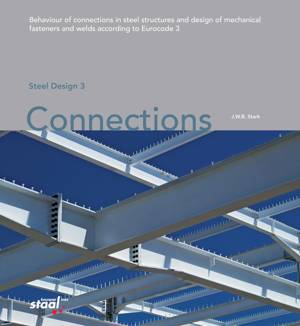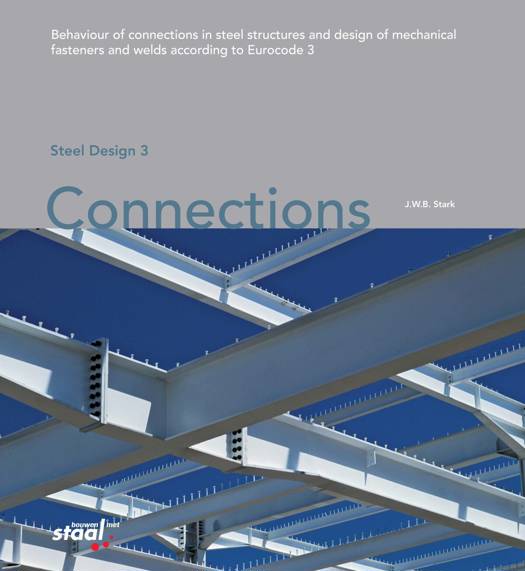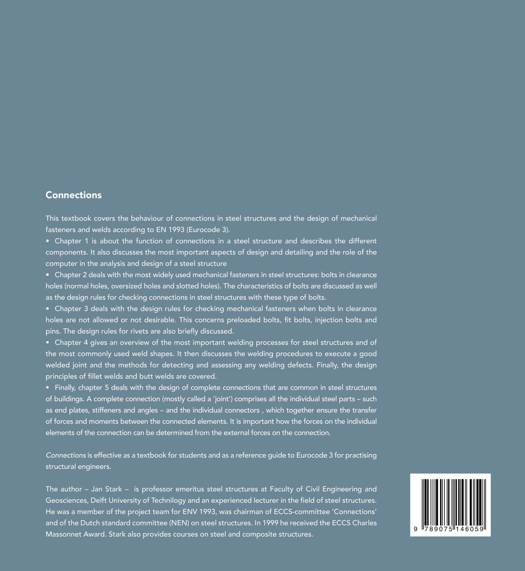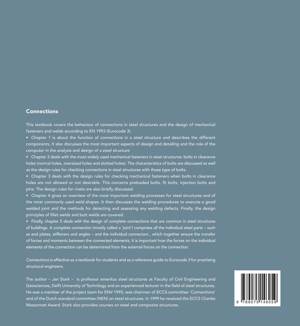
Je cadeautjes zeker op tijd in huis hebben voor de feestdagen? Kom langs in onze winkels en vind het perfecte geschenk!
- Afhalen na 1 uur in een winkel met voorraad
- Gratis thuislevering in België vanaf € 30
- Ruim aanbod met 7 miljoen producten
Je cadeautjes zeker op tijd in huis hebben voor de feestdagen? Kom langs in onze winkels en vind het perfecte geschenk!
- Afhalen na 1 uur in een winkel met voorraad
- Gratis thuislevering in België vanaf € 30
- Ruim aanbod met 7 miljoen producten
Zoeken
Connections
Behaviour of connections in steel structures and design of mechanical fasteners and welds according to Eurocode 3
J.W.B. Stark
€ 72,00
+ 144 punten
Omschrijving
Connections
This textbook covers the behaviour of connections in steel structures and the design of mechanical fasteners and welds according to EN 1993 (Eurocode 3).
• Chapter 1 is about the function of connections in a steel structure and describes the different components. It also discusses the most important aspects of design and detailing and the role of the computer in the analysis and design of a steel structure
• Chapter 2 deals with the most widely used mechanical fasteners in steel structures: bolts in clearance holes (normal holes, oversized holes and slotted holes). The characteristics of bolts are discussed as well as the design rules for checking connections in steel structures with these type of bolts.
• Chapter 3 deals with the design rules for checking mechanical fasteners when bolts in clearance holes are not allowed or not desirable. This concerns preloaded bolts, fit bolts, injection bolts and pins. The design rules for rivets are also briefly discussed.
• Chapter 4 gives an overview of the most important welding processes for steel structures and of the most commonly used weld shapes. It then discusses the welding procedures to execute a good welded joint and the methods for detecting and assessing any welding defects. Finally, the design principles of fillet welds and butt welds are covered.
• Finally, chapter 5 deals with the design of complete connections that are common in steel structures of buildings. A complete connection (mostly called a 'joint') comprises all the individual steel parts – such as end plates, stiffeners and angles – and the individual connectors , which together ensure the transfer of forces and moments between the connected elements. It is important how the forces on the individual elements of the connection can be determined from the external forces on the connection.
Connections is effective as a textbook for students and as a reference guide to Eurocode 3 for practising structural engineers.
The author – Jan Stark – is professor emeritus steel structures at Faculty of Civil Engineering and Geosciences, Delft University of Technilogy and an experienced lecturer in the field of steel structures. He was a member of the project team for ENV 1993, was chairman of ECCS-committee 'Connections' and of the Dutch standard committee (NEN) on steel structures. In 1999 he received the ECCS Charles Massonnet Award. Stark also provides courses on steel and composite structures.
This textbook covers the behaviour of connections in steel structures and the design of mechanical fasteners and welds according to EN 1993 (Eurocode 3).
• Chapter 1 is about the function of connections in a steel structure and describes the different components. It also discusses the most important aspects of design and detailing and the role of the computer in the analysis and design of a steel structure
• Chapter 2 deals with the most widely used mechanical fasteners in steel structures: bolts in clearance holes (normal holes, oversized holes and slotted holes). The characteristics of bolts are discussed as well as the design rules for checking connections in steel structures with these type of bolts.
• Chapter 3 deals with the design rules for checking mechanical fasteners when bolts in clearance holes are not allowed or not desirable. This concerns preloaded bolts, fit bolts, injection bolts and pins. The design rules for rivets are also briefly discussed.
• Chapter 4 gives an overview of the most important welding processes for steel structures and of the most commonly used weld shapes. It then discusses the welding procedures to execute a good welded joint and the methods for detecting and assessing any welding defects. Finally, the design principles of fillet welds and butt welds are covered.
• Finally, chapter 5 deals with the design of complete connections that are common in steel structures of buildings. A complete connection (mostly called a 'joint') comprises all the individual steel parts – such as end plates, stiffeners and angles – and the individual connectors , which together ensure the transfer of forces and moments between the connected elements. It is important how the forces on the individual elements of the connection can be determined from the external forces on the connection.
Connections is effective as a textbook for students and as a reference guide to Eurocode 3 for practising structural engineers.
The author – Jan Stark – is professor emeritus steel structures at Faculty of Civil Engineering and Geosciences, Delft University of Technilogy and an experienced lecturer in the field of steel structures. He was a member of the project team for ENV 1993, was chairman of ECCS-committee 'Connections' and of the Dutch standard committee (NEN) on steel structures. In 1999 he received the ECCS Charles Massonnet Award. Stark also provides courses on steel and composite structures.
Specificaties
Betrokkenen
- Auteur(s):
- Uitgeverij:
Inhoud
- Aantal bladzijden:
- 206
- Taal:
- Engels
- Reeks:
- Reeksnummer:
- nr. 3
Eigenschappen
- Productcode (EAN):
- 9789075146059
- Verschijningsdatum:
- 6/08/2021
- Uitvoering:
- Hardcover
- Afmetingen:
- 235 mm x 258 mm
- Gewicht:
- 1022 g

Alleen bij Standaard Boekhandel
+ 144 punten op je klantenkaart van Standaard Boekhandel
Beoordelingen
We publiceren alleen reviews die voldoen aan de voorwaarden voor reviews. Bekijk onze voorwaarden voor reviews.











